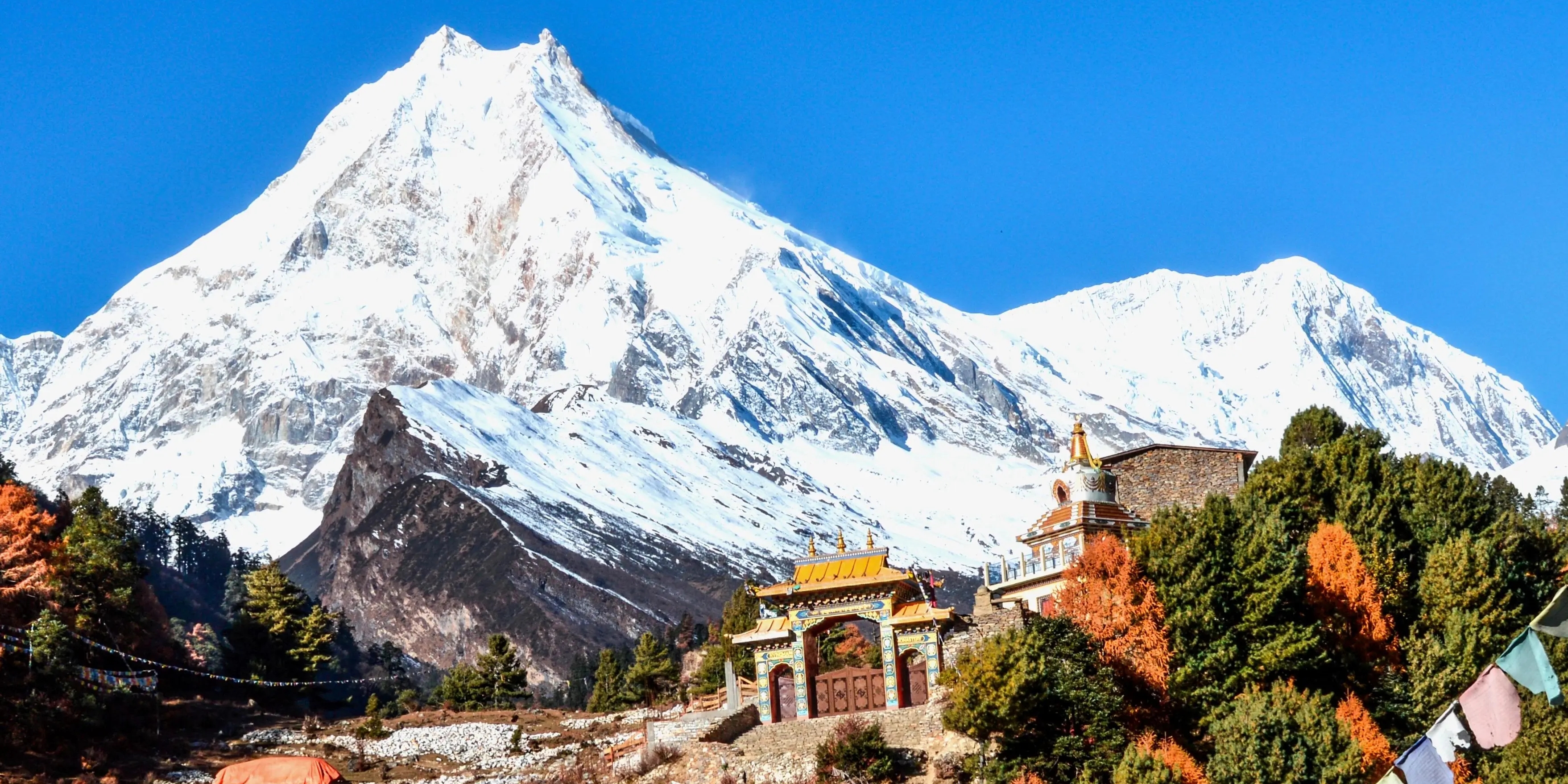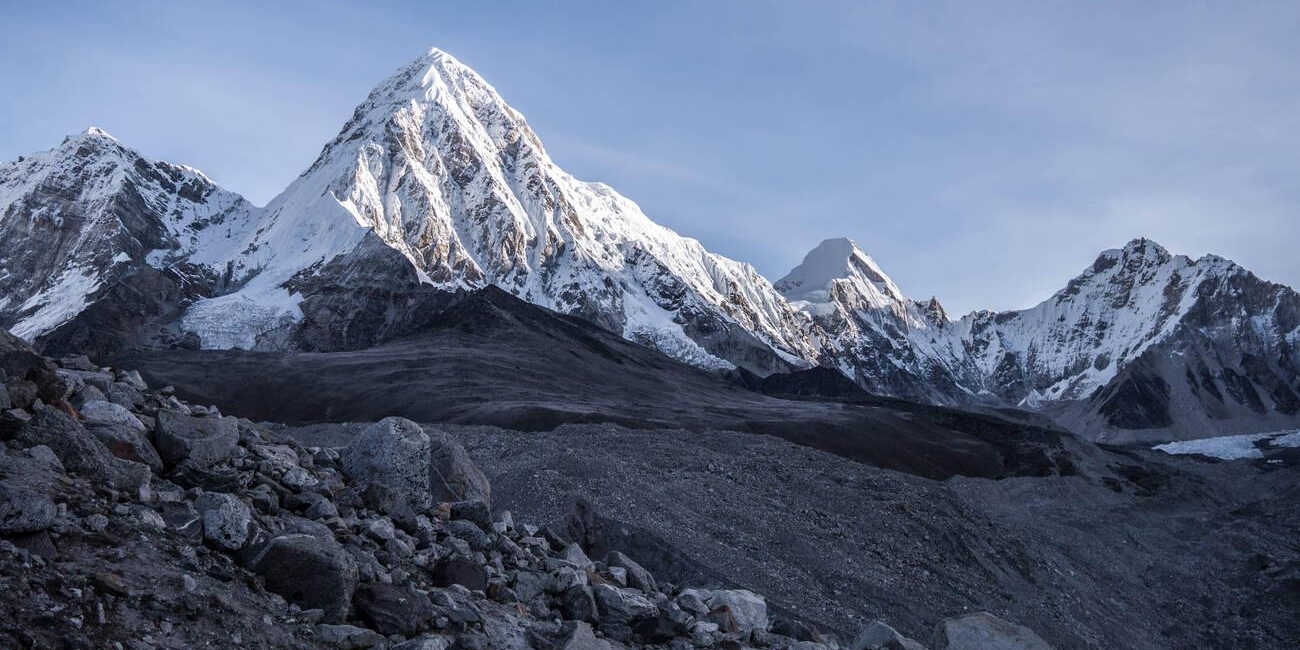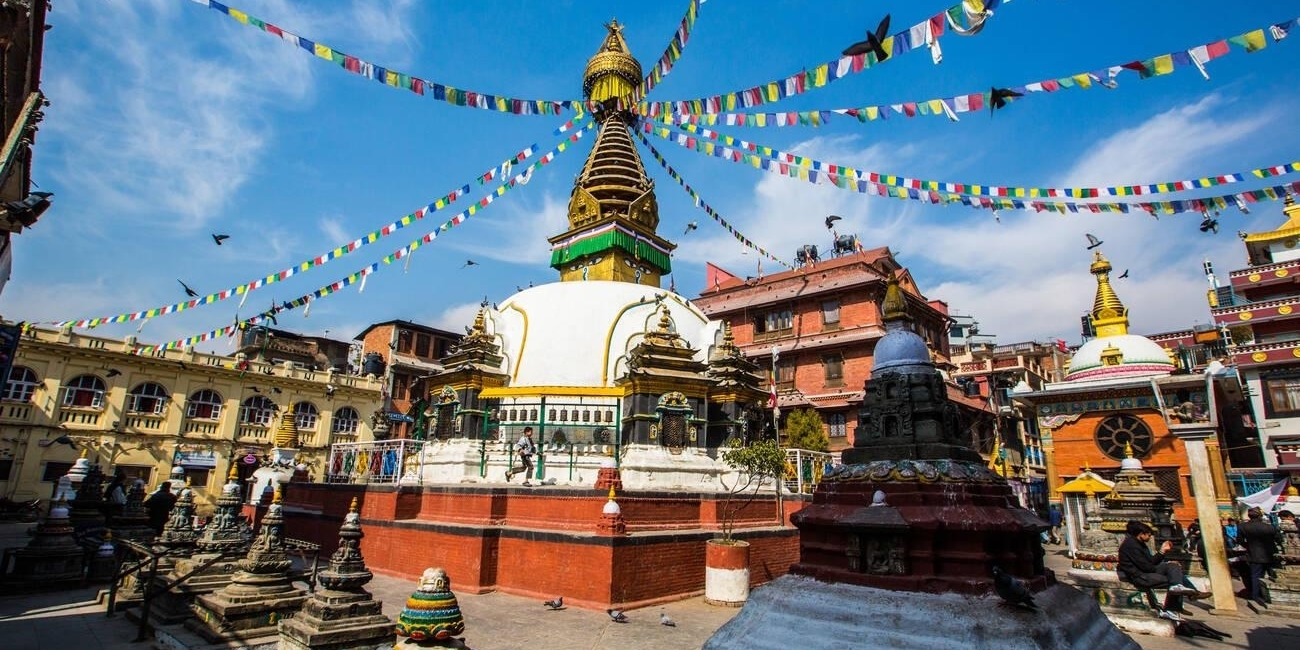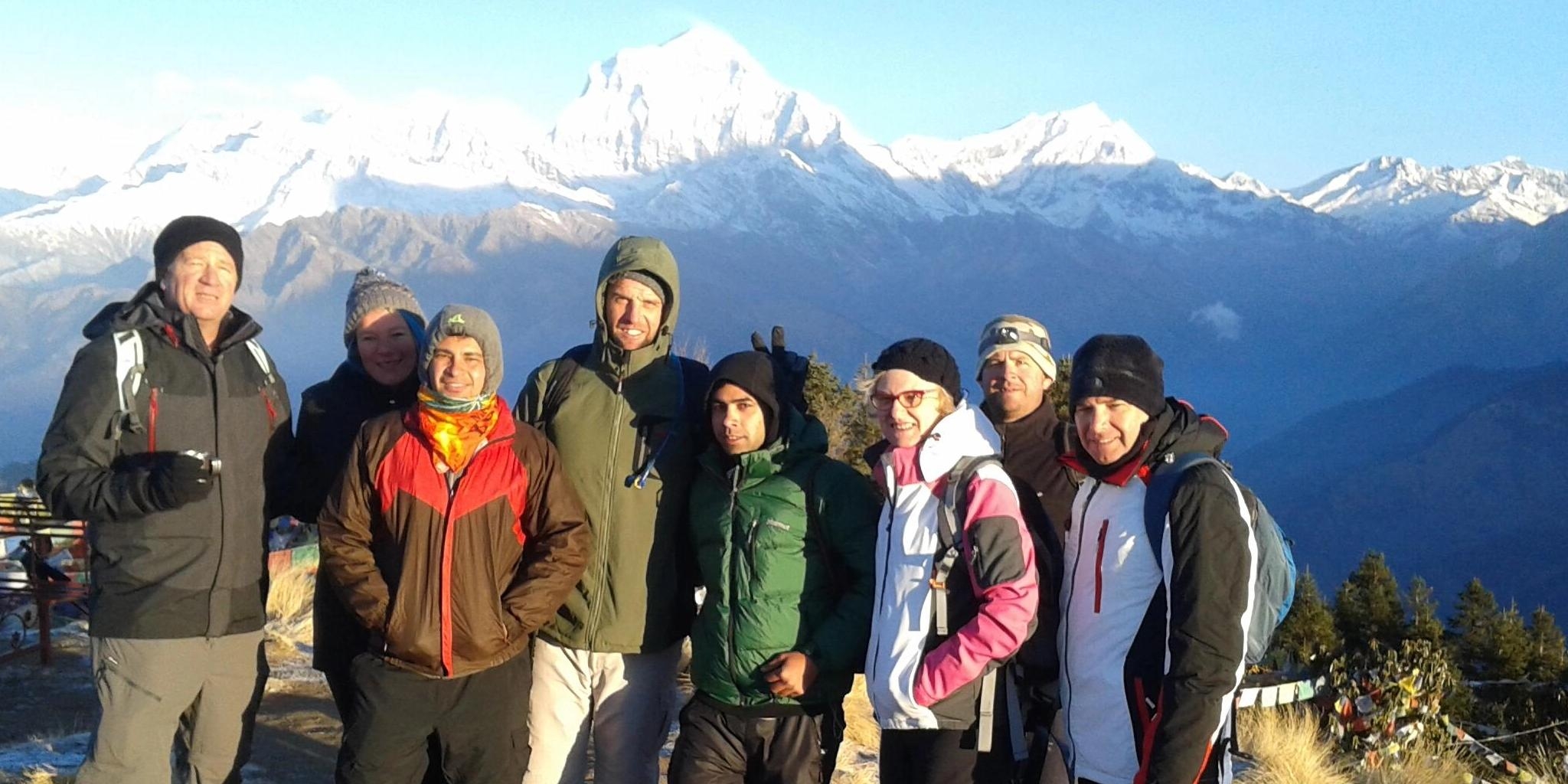


Published 15 Aug 2025
The Manaslu Circuit Trek is a spectacular adventure that takes trekkers through some of Nepal’s most breathtaking and remote landscapes. This route offers a unique blend of natural beauty, cultural richness, and thrilling mountain challenges. However, given its remote location and high altitudes, careful planning and preparation are essential for a safe and enjoyable trek. At Rediscover Nepal Treks & Tours, we emphasize safety, cultural respect, and environmental awareness as core principles to help you make the most of this incredible journey.
Manaslu Circuit is less crowded than other popular treks like Annapurna or Everest, allowing trekkers to experience the authentic Himalayan lifestyle. Yet, this remoteness means fewer facilities and tougher conditions, making safety a top priority. The trail traverses a high-altitude pass at over 5,100 meters (Larkya La), which requires good acclimatization, fitness, and mental readiness. Following expert advice can reduce risks such as altitude sickness, injuries, or logistical setbacks. Our team at Rediscover Nepal Treks & Tours provides detailed guidance and support from start to finish, ensuring your trek is both safe and memorable.
Key Takeaways:
Proper planning is the foundation of a successful Manaslu Circuit Trek. This trek typically takes about 14-16 days, including acclimatization and rest days. Begin by choosing the best season for trekking—pre-monsoon (March to May) and post-monsoon (September to November) are ideal for clear skies and pleasant weather. Securing the necessary permits early is also critical since Manaslu is a restricted area requiring special permits from the Nepal government.
Selecting a trusted trekking company, like Rediscover Nepal Treks & Tours, ensures you have expert logistical support, from arranging permits to providing experienced guides and porters. Properly scheduled rest days help your body adjust to higher altitudes, especially before and after crossing the Larkya La Pass. During planning, research accommodations along the route, which can range from basic tea houses to slightly more equipped lodges in larger villages.
Additionally, plan your flights and transportation to and from Kathmandu carefully, including buffer days for unforeseen delays. Stay updated on local weather and political situations, and have contingency plans. Investing time in preparation minimizes surprises, making your trek smoother and safer.
Planning Essentials:
Choosing the right gear can make or break your Manaslu trek experience. Weather conditions vary dramatically—from hot valley floors to freezing mountain passes—so layering is crucial. Pack moisture-wicking base layers, insulated mid-layers, and a waterproof outer shell. Sturdy, well-broken-in trekking boots with good ankle support are mandatory to handle rugged terrain.
Other important items include a sleeping bag rated for sub-zero temperatures, a comfortable daypack, trekking poles for stability, and a headlamp with extra batteries. Don’t forget sunscreen, sunglasses, and a wide-brimmed hat to protect against strong UV rays at high altitudes. Hydration systems and water purification tablets are essential, as clean water sources may be scarce.
Medical kits should contain altitude sickness medication, pain relievers, blister treatments, and any personal prescriptions. Electronics such as cameras and power banks are optional but highly recommended to capture memories and stay connected.
Essential Gear at a Glance:
The Manaslu Circuit is physically demanding, involving long days of hiking and steep elevation gains. Preparing your body through a structured training program weeks or months before departure will greatly improve your trekking experience. Focus on cardiovascular fitness by walking, jogging, cycling, or swimming at least 4-5 times per week.
Strength training for your legs, core, and back will help carry a backpack and maintain balance on uneven trails. Hiking on varied terrain with a loaded backpack is ideal practice, simulating real conditions. Flexibility exercises and yoga can reduce the risk of injuries and improve endurance.
Mental preparation is just as vital. The trek involves remote areas where medical help may be hours away, so resilience and a positive mindset are key. Learning about altitude sickness symptoms and how to respond will empower you to make safer decisions. Lastly, maintaining a healthy diet and staying hydrated before and during the trek supports optimal physical performance.
Physical Prep Summary:
The Manaslu Circuit Trek follows a fascinating journey through lush subtropical forests, traditional Gurung and Tibetan villages, and rugged high-altitude passes. The route begins in Kathmandu, followed by a scenic drive to the trailhead, then a gradual ascent through villages with rich cultural heritages.
Each stage offers unique views, wildlife, and cultural experiences. The rest day in Sama Gaon is crucial to acclimatize and enjoy nearby monasteries and hiking trails. Guides from Rediscover Nepal Treks & Tours ensure safe pacing, route knowledge, and cultural insights throughout.
Route Highlights:
One of the most critical concerns for trekkers on the Manaslu Circuit is altitude sickness, also known as Acute Mountain Sickness (AMS). As the trail ascends above 3,000 meters, oxygen levels in the air drop, and the body needs time to adapt. Without proper acclimatization, trekkers are at risk of headaches, nausea, dizziness, shortness of breath, and fatigue. Ignoring these symptoms can lead to more severe conditions like High Altitude Pulmonary Edema (HAPE) or High Altitude Cerebral Edema (HACE), both of which can be life-threatening.
Rediscover Nepal Treks & Tours places high importance on educating trekkers about AMS. Our itineraries include planned acclimatization days—particularly in Sama Gaon (3,500m)—to give your body time to adjust. Guides are trained to recognize early signs of AMS and take immediate action, which may involve rest, descent, or, in rare cases, emergency evacuation. We also recommend that trekkers consider preventative medications such as Diamox (under a doctor’s guidance) and stay well-hydrated throughout the trek.
Quick Tips for Altitude Awareness:
Hiring a knowledgeable guide and porter is not just about convenience—it’s essential for safety, navigation, cultural insight, and supporting the local economy. The Manaslu region is a restricted trekking zone, and trekking without a licensed guide is not permitted. Experienced guides from Rediscover Nepal Treks & Tours are well-versed in the local terrain, weather patterns, and emergency protocols. They can also serve as interpreters, cultural ambassadors, and logistical managers, ensuring your trek runs smoothly.
Porters are equally important as they carry the bulk of your load, allowing you to enjoy the journey without physical exhaustion. They usually carry 20–25 kg and are used to the high-altitude terrain. Employing porters also creates sustainable jobs for local communities. Ethical treatment of porters—including fair wages, insurance, and reasonable loads—is a core value of our company. We ensure that everyone who supports your trek is treated with dignity and respect.
Why Hire Guides and Porters:
While the Manaslu Circuit is remote, it still offers a range of basic tea houses and lodges along the route. These accommodations are typically family-run and provide a simple yet cozy place to rest, eat, and connect with other trekkers. The rooms usually feature twin beds with shared toilets, and the amenities vary depending on the village. As you climb higher, facilities become more rustic due to logistical challenges and limited infrastructure.
At Rediscover Nepal Treks & Tours, we have established relationships with reliable tea house owners, ensuring our clients receive clean bedding, hot meals, and, when available, hot showers and charging facilities. While luxury is not part of the experience, the warmth and hospitality of these guesthouses add cultural depth and authenticity to your trek. We recommend bringing your own sleeping bag, especially for higher-altitude villages like Dharmasala or Bhimtang, where extra insulation is needed.
What to Expect from Tea Houses:
Proper hydration and nutrition are critical on the Manaslu Circuit Trek, especially when trekking at high altitudes. Dehydration not only weakens your energy levels but also increases the risk of altitude sickness. You should aim to drink at least 3–4 liters of water per day, even if you don’t feel thirsty. Use water purification tablets or filters to make stream or tap water safe to drink, as bottled water is discouraged due to environmental concerns.
As for food, most tea houses offer a similar menu focusing on carbohydrate-rich, easy-to-digest meals that provide energy for long trekking days. The staple dal bhat (rice, lentils, and vegetables) is highly recommended due to its nutritional balance and energy content. Other options include soups, fried rice, momos (dumplings), and pasta. While meat is available in lower elevations, it's better avoided higher up due to lack of refrigeration. Snacking on energy bars, nuts, and dried fruits between meals also helps maintain stamina.
Nutrition & Hydration Tips:
The best time to trek the Manaslu Circuit is during the pre-monsoon (March–May) and post-monsoon (late September–November) seasons. These months offer the most stable weather, clearer skies, and moderate temperatures. In spring, you can enjoy blooming rhododendrons and lush greenery, while autumn offers crisp air and panoramic mountain views. These seasons also see fewer landslides and avalanches, making the trail safer and more predictable.
Avoid trekking during the monsoon season (June–August) due to heavy rains, slippery trails, and the possibility of landslides. The winter months (December–February), while quiet, are extremely cold and snowy—particularly around the Larkya La Pass, which may be impassable without mountaineering gear. Rediscover Nepal Treks & Tours carefully monitors weather updates during your trek, and our guides are trained to make quick decisions if conditions change unexpectedly.
Seasonal Trekking Guide:
Trekking the Manaslu Circuit offers unforgettable experiences, but safety should always be your top priority. The trail covers rugged, remote terrain where weather and altitude can quickly change the conditions. Basic safety precautions—like walking at a steady pace, staying on marked trails, and keeping your group in sight—go a long way in preventing accidents. Loose rocks, steep ascents, and narrow paths near cliffs require full concentration. Avoid trekking alone and always inform your guide or fellow trekkers if you feel unwell or need to stop.
At Rediscover Nepal Treks & Tours, our experienced guides prioritize client safety throughout the trek. We provide regular safety briefings, weather updates, and encourage slow acclimatization. It’s also important to listen to your body—altitude and fatigue can mask warning signs of illness or injury. Use trekking poles for balance, take frequent breaks, and don’t push beyond your limits, especially above 3,000 meters.
Trail Safety Checklist:
The Manaslu region is a pristine natural wonder filled with diverse ecosystems and fragile alpine environments. As trekkers, it is our responsibility to minimize our environmental impact. This means following Leave No Trace principles: packing out all waste, avoiding the use of single-use plastics, and not disturbing wildlife. Water bottles and snack wrappers are common pollutants—use a reusable water bottle and carry your trash until you reach proper disposal points.
Rediscover Nepal Treks & Tours is committed to eco-friendly tourism. We promote sustainability by partnering with local lodges that use solar energy and biodegradable products where possible. We also encourage our clients to avoid burning wood for warmth or cooking at higher altitudes, as this contributes to deforestation. The collective effort of all trekkers and agencies can help preserve the natural beauty of the Manaslu region for generations to come.
Eco-Friendly Trekking Tips:
The Manaslu Circuit passes through culturally rich regions inhabited by Gurung, Nubri, and Tibetan Buddhist communities. Respecting local customs, beliefs, and traditions is not just polite—it enhances your trekking experience. Modesty in dress and behavior is appreciated, especially when visiting monasteries and local homes. Always ask for permission before taking photographs of people or religious sites, and avoid pointing your feet at shrines or sitting with your feet toward a fire or person.
Rediscover Nepal Treks & Tours includes cultural briefings before and during the trek to ensure our guests engage respectfully with locals. It’s important to understand that life in these remote villages is shaped by centuries-old traditions. Learning a few phrases in Nepali or Tibetan dialects (like “Namaste” or “Tashi Delek”) shows appreciation and fosters connection. Giving gifts or money to children may seem kind but can encourage dependency—support community businesses or schools instead.
Cultural Do’s and Don’ts:
Even with the best preparation, emergencies can happen. Whether it's altitude sickness, injury, or unexpected weather changes, knowing what to do is crucial. Trekkers should always carry a basic first-aid kit, and more importantly, ensure their travel insurance covers high-altitude trekking and emergency evacuation. In remote areas of the Manaslu Circuit, communication may be limited, so it’s essential to rely on a guide with access to satellite phones or radios.
At Rediscover Nepal Treks & Tours, safety is our highest priority. Our guides are trained in first aid and emergency response and carry the necessary communication tools to call for a helicopter evacuation if required. If a trekker shows signs of severe altitude sickness (like confusion, loss of coordination, or shortness of breath at rest), immediate descent is the most effective treatment. In case of injury, our team provides support and transportation to the nearest medical center, with your health and safety always coming first.
Emergency Readiness Essentials:
The Manaslu Circuit Trek is not just a physically demanding adventure—it is a deeply transformative journey through Nepal’s pristine landscapes, ancient cultures, and high-altitude wilderness. Success on this trek is not only measured by reaching Larkya La Pass but also by how well you prepare, respect the environment, and adapt to the challenges along the way. From altitude acclimatization and physical preparation to understanding cultural norms and knowing emergency protocols, every aspect contributes to a safe and memorable trekking experience. With thoughtful planning and the right mindset, this trek offers unmatched rewards in terms of natural beauty, personal achievement, and cultural connection.
At Rediscover Nepal Treks & Tours, we are committed to ensuring your Manaslu Circuit experience is safe, ethical, and unforgettable. Our expert guides, well-structured itineraries, and local knowledge provide the foundation for a smooth and enriching journey. But beyond logistics, we believe in responsible trekking—caring for the environment, supporting local communities, and preserving the heritage of the Himalayas for future generations. Whether you're a seasoned trekker or a first-time visitor to Nepal, we are here to guide, support, and walk with you every step of the way. Let your trek to Manaslu not just be a climb, but a story you’ll cherish for life.
Final Takeaways for a Safe & Successful Trek:

Embark on the adventure of a lifetime with Everest trekking in 2025, a journey that takes you through the heart of the Himalayas, offering breathtakin...

Nepal, a land of breathtaking landscapes, ancient heritage, and rich cultural diversity, is a must-visit destination for travelers seeking adventure,...

Nepal, the land of majestic mountains and spiritual serenity, is a dream destination for trekkers around the world. What sets Nepal apart, especially...
